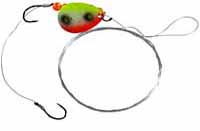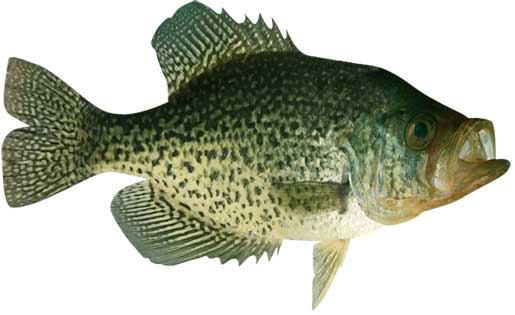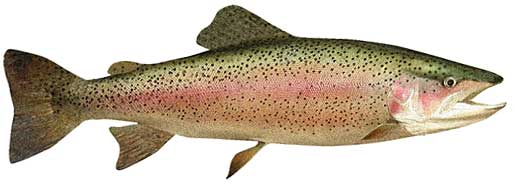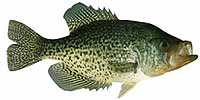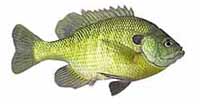Fishing Report For Cherry Creek Reservoir, CO
By Rick Seaman
Last updated on .
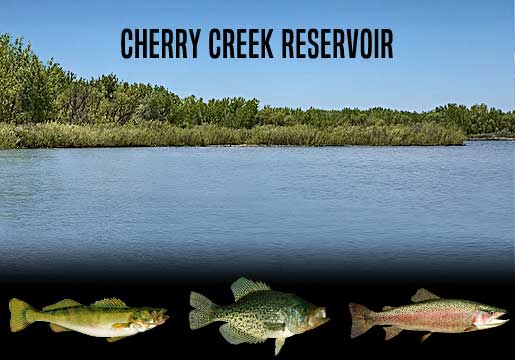
Fishing Reports
Popular Fish Species Cherry Creek Reservoir, CO
Walleye
Current Report: Good
FALL. Fall brought cooler temperatures to shallow water, drawing walleye and baitfish shallower.The south portion of the lake, from the dam to the People's Pier area, is a good place to start. Walleye continue to be a major draw for anglers. Locals report catching nice walleye on long points, flats along the river and creek channels, and structure off shore. Jigs, swimbaits, spoons, crankbaits, jerkbaits, and spinnerbaits are all historically good for catching walleye this time of year. Early Fall finds them in 8 to 20 feet of water. Later in Fall, they move out slightly deeper. Dragging jigs, bottom bouncers, or worm harnesses with nightcrawlers or leeches, around ledge drop-offs is catching walleye fairly consistently. Watch for the bigger walleye to be slightly deeper than the majority of the school.
WINTER. This Winter fishing for walleye has been pretty good through the ice, for the last few years. Before, during and after the ice, anglers report catching them in the main basin area, in 15 to 25 feet of water, along deep creek channel edges, rocky humps and ledges. Steep drops in the area toward the dam are also producing during these cold months. They primarily feed on small fish, staying close to the bottom. After ice-out blade baits, jigs, swimbaits, spoons, deep-diving crankbaits, and worm harness spinners, all work while deep trolling or drifting.
SPRING. Early Spring brings warming water in the shallows, and draws walleye here to feed, especially rocky areas and inlet channels. In Spring work points, drop offs, submerged structure, rock ledges, flats and flats adjacent to deeper water. Here, in 6 to 14 feet deep, they will spawn once the water warms to the mid to high 40's.Once you locate a school, a drop-shot rig with minnow-shaped plastics or nightcrawlers is a good way to work the school. When they move shallow, bright colored jigs, tipped with minnows or nightcrawlers typically catch them. Spinnerbaits, jerkbaits and crankbaits are also working when walleye are up shallow. Afterwards, they move to around 20 feet deep around points, flats, shoals and ledges, nearby shore, often staying in close proximity to their spawning locations.
SUMMER. Water temperatures rise in Summer, and walleye fishing is good if you can get your bait deep enough. Early in Summer, walleye tend to concentrate in 8 to 20 feet of water. Throughout Summer, early in the morning, and from dusk to long after dark are good times to catch walleye. At those times they move slightly shallower to feed in low-light conditions. Night fishing is often good in Summer, as well. The rest of the time they are cruising flats and creek channel edges, 12 to 20 feet deep , preferring the cooler temperatures. When the bite is slow, grubs and nightcrawlers, fished just off the bottom typically catch walleye.
Black Crappie
Current Report: Fair To Good
FALL. Baitfish, which have moved into shallow flats, coves and bays, have drawn crappie into these areas. Decent crappie are being caught while feeding heavily, in preparation for the cold Winter. Anglers report that 6 to 16 feet of water is where most bites are coming. Minnows, hair jigs, and crappie jigs, are good options during this feeding marathon. Late fall starts the migration deeper, toward winter holding areas, for both crappie and baitfish. Small flutter spoons, fished in 15 to 20 feet of water, are a good option during this transition. Good results are coming around points, creek channels, and brush piles.
WINTER. Once the shallows start cooling rapidly, crappie will migrate to deeper holding areas, mostly off shore. At this time they are typically caught using a very slow presentation, in 10 to 24 feet of water. Many are caught around deep brush piles, creek channel bends, submerged timber, and main-lake structure. If they are suspending in open water, they often relate to some cover, or structure change, directly below them. During warming trends, especially warm afternoons, they are drawn into 8 to 10 feet of water to feed.
SPRING. In early Spring, crappie begin staging in 2 to 10 feet of water, just outside spawning bays and shallow flats. Spring is prime time to be on the water, as crappie have moved shallow to spawn. At that time, they are typically caught in 4 to 8 feet of water. Vegetation, docks, brush and wood are where most anglers catch crappie using small crappie jigs or live minnows. After the spawn, crappie typically move outside the spawning area and hold on cover close by, in 10 to 14 feet of water. Once they move deep, anglers report success using fish finders and forward facing sonar to locate schools of crappie, which tend to stack vertically around cover. Light tackle, with 4 lb to 8 lb line, is a popular choice.
SUMMER. Water temperatures get quite warm, and crappie fishing is usually pretty good. They feed in 6 to 10 feet of water early and late in the day, until the hot Summer sun causes them to retreat to depths of 12 to 16 feet. Also, a few have embedded in the shade of slightly shallower vegetation. This is a good time to focus around brush piles, standing timber, deep lay downs, bridge pilings and deeper docks. Anglers are also locating schools of crappie hanging over deep structure and around creek channel edges, using fish-finder electronics.
Rainbow Trout
Current Report: Good
CO Parks and Wildlife reports stocking rainbow trout in Cherry Creek Reservoir, as an on-going fisheries management program to enhance angler experience.
FALL. Cooling water temperatures in the shallows, draw rainbow trout out of deeper Summer depths. Anglers are now catching them 8 to 18 feet deep on rocky banks, wind-blown points, rocky structure, humps, and anywhere baitfish are gathering. Now that they had a full summer to grow, there are some nice size rainbow to be caught. Small spinners, spoons, jigs, miniature crankbaits and swimbaits are good choices, as are salmon eggs and prepared baits. Later in Autumn, they move into 15 to 20 feet of water.
WINTER. When Winter sets in jigging spoons, and jigs tipped with bait, are catching nice limits of rainbows out of 15 to 22 feet of water. These baits work well before, during and after ice fishing season. After ice out, deep trolling with leaded line, or vertical jigging with spoons and jigs, are the best approach during the cold-water season.
SPRING. As water begins to warm in early Spring, rainbow trout move from their late winter holding areas to shallow, warmer water 4 to 12 feet deep. A good number of rainbows are typically caught from mid morning to late afternoon, during the warmest water of the day. Shallow flats and rocky structure are quick to warm in the afternoon sun. A wide variety of small spinners, spoons and bait are catching most of the fish.
SUMMER. Once Summer is here to stay, the warmer water drives rainbow deeper, 4 to 14 feet deep, occasionally deeper. Trolling with spoons, spinners and crankbaits, using leaded line, and drift fishing with bait, are currently the most productive methods. Following drop-offs into deeper water, along structure or creek channels, is a major key to getting bites. Anglers fishing from the bank are using nightcrawlers or Berkley PowerBait, with heavy weights on a Carolina rig, to get baits in deeper water.
Fishing Video
Fish species to fish for...
Guide to fishing for largemouth bass, channel catfish, black crappie, walleye, rainbow trout, bluegill and hybrid striped bass at Cherry Creek Reservoir in Colorado.
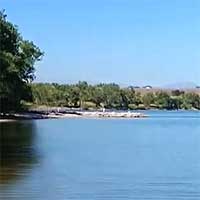 Cherry Creek Reservoir is an 880-acre lake with 5 miles of shoreline, located in Cherry Creek State Park. Big walleyes, fat rainbow trout and hybrid stripers are local favorites. Bass and catfish also reside here and the lake holds healthy populations of both. Ice fishing is available in winter.
Cherry Creek Reservoir is an 880-acre lake with 5 miles of shoreline, located in Cherry Creek State Park. Big walleyes, fat rainbow trout and hybrid stripers are local favorites. Bass and catfish also reside here and the lake holds healthy populations of both. Ice fishing is available in winter.
Primary fish species to catch
Click images for fishing tips and details about each species.
Today's Weather & Forecast
Marinas
Click here for marinas.
Public Boat Launch Ramps & Landings
Click here for boat ramps.
Fishing License
Click here for a Colorado fishing license.
Map - Fishing & Access
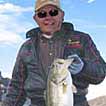 Rick Seaman is a fishing enthusiast with over five decades of fishing experience, a retired tournament fisherman, author of numerous published articles on fishing, and co-author of the book "Bass Fishing - It's not WHAT you throw, It's WHERE you throw it".
Rick Seaman is a fishing enthusiast with over five decades of fishing experience, a retired tournament fisherman, author of numerous published articles on fishing, and co-author of the book "Bass Fishing - It's not WHAT you throw, It's WHERE you throw it".
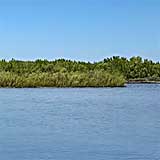 Contact Information
Contact Information
Cherry Creek State Park Campground
4201 S Parker Rd
Aurora, CO 80014
303 690-1166
Fishing lakes in each state
110525
Cherry Creek Reservoir, CO Report
COLORADO


Fishing for walleye, trout and wipers in central CO.



